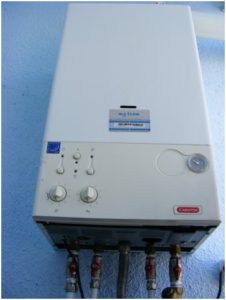Central heating is something that almost all of us have in our homes, yet we tend to take it for granted. Most of us don’t actually know much about our heating systems so, for those who want to know a little bit more, here’s a basic primer.
How Central Heating Works
The basics behind central heating are not as complex as you may think, and you probably already understand them fairly well. The “central” part is the boiler, which generates all your home’s heat in one location. It burns fuel, usually gas or oil, to heat water. This is then distributed by pump to the radiators, as needed to maintain the temperature defined by the thermostat.
Of course, your boiler also heats your home’s water supply. This is usually stored in the hot water tank in order to provide a ready supply, though this depends on the type of heating system you have installed.
Replacing a Boiler
Though a boiler should last for years with proper maintenance, there are several reasons you may want to replace it. Your old boiler may be faulty, so replacement is simply necessary. Alternatively, it may be that it’s no longer performing well, or that it’s not as energy-efficient as a newer boiler.
Ideally, a boiler should be replaced in the summer so that you’re not left in the cold while your heating is out of action. There should be no problem finding reliable local contractors who provide boiler installation in Woking and elsewhere to perform this type of work. These firms, such as http://www.rjplumbingandheating.co.uk/ and others are also able to advise customers on the most suitable kinds of boiler for their property.
Types of Boiler
There are two main types of boiler. These are:
Conventional
A conventional boiler can supply multiple water outlets without losing pressure. However, you only have as much hot water as your tank can hold and they must be either left on all the time, turned on shortly before you need water, or put on a timer.
Combi
A combi boiler heats water quickly as it flows from the mains. There’s no limit to the amount of hot water you have and you do not need room for a tank. However, they may lose pressure when supplying multiple taps at once and can take a few seconds to heat up.

